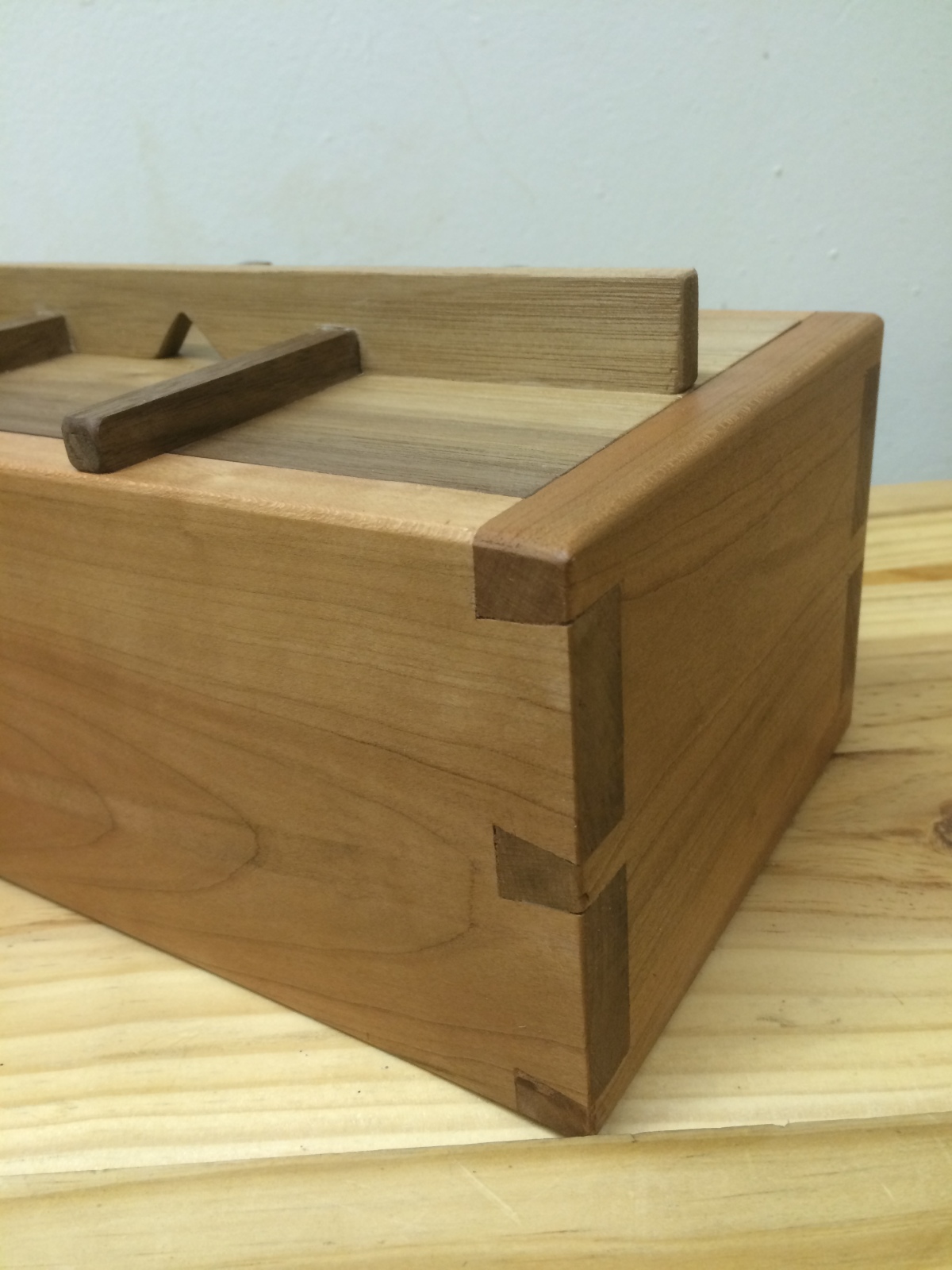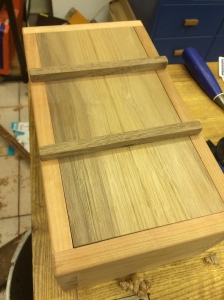I made a 300 mm x 160 mm x 110 mm box out of 16 mm thick Cherry for a gift. I used through dovetails for the box. The lid was 11 mm re-sawn book matched Walnut. The lid design evolved on it’s own to become rather Oriental in looks. It’s the first time I’ve worked with Walnut, and I really enjoyed planing and chiselling it as well as the beauty of the grain.
Up to this point my sawing wasn’t progressing as I’m mixed dominant (right hand left eye), but after reading Jeff Miller’s’ “The Foundations of Better Woodworking,” I improved. Basically I twist my body to the left while holding the saw in my right hand. This gives my dominant left eye a better line of sight.
The bottom was grooved to fit a hardboard base which was covered with a leather-type paper used by bookbinders.
The lid seats in side the box so I made a template out of hardboard first, which was then used as the base for the leather-type paper. Two Walnut strips were stuck onto the top of the lid to prevent it from falling in.
I added a longitudinal piece to act as a handle and finished it with Danish oil & wax. The long side has allowance for seasonal wood movement and the two cross pieces are only glued in the central area for this same reason.



















































